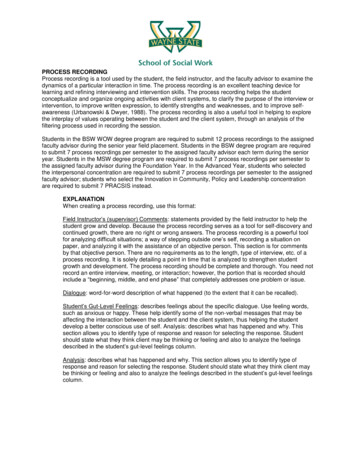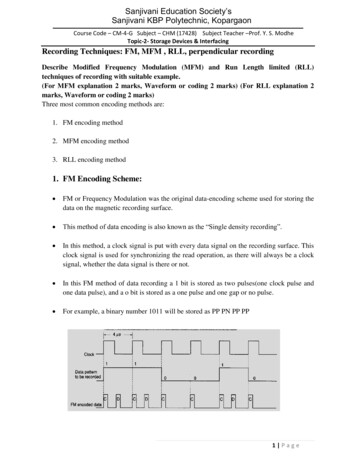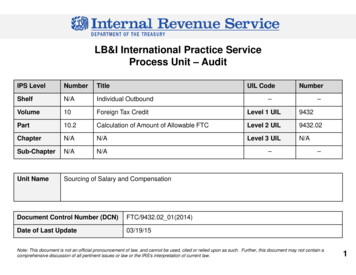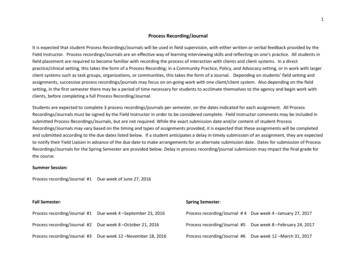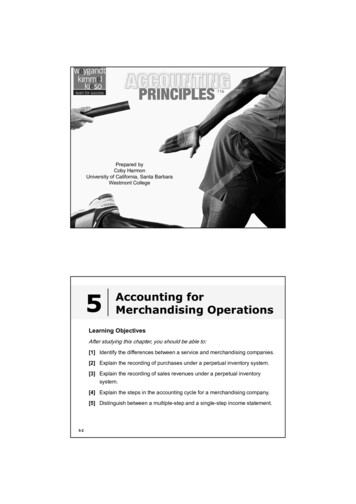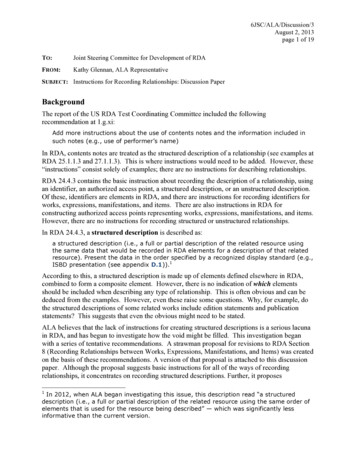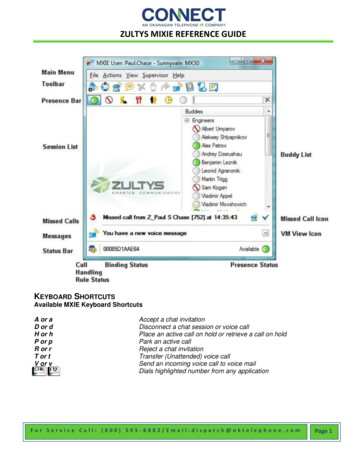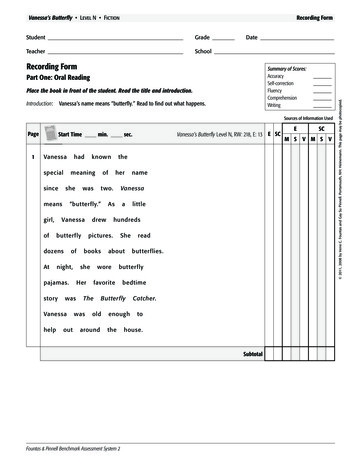
Transcription
Vanessa’s Butterfly Level N FictionRecording FormGradeDateTeacherSchoolRecording FormSummary of WritingPart One: Oral ReadingPlace the book in front of the student. Read the title and introduction.Vanessa’s name means “butterfly.” Read to find out what happens.Introduction:Sources of Information UsedPage1Start ght,stor shepajamas.theofwasVanessa’s Butterfly Level N, RW: 218, E: 13 E girl,min.enoughtheCatcher.tohouse.SubtotalFountas & Pinnell Benchmark Assessment System 2ESCM S V M S V 2011, 2008 by Irene C. Fountas and Gay Su Pinnell. Portsmouth, NH: Heinemann. This page may be photocopied.Student
Vanessa’s Butterfly Level N FictionRecording FormPart One: Oral Reading continuedSources of Information UsedPage Text2E SC 2011, 2008 by Irene C. Fountas and Gay Su Pinnell. Portsmouth, NH: Heinemann. This page may be nESCM S V M S talFountas & Pinnell Benchmark Assessment System 2
Vanessa’s Butterfly Level N FictionRecording FormPart One: Oral Reading continuedSources of Information UsedPage Text“Wherewillitland? oflytheaway! rflypatient,”garden.Vanessabacklily.theit! onstoodwish,asaidstill.musttothepinkver ycatcherbeherself.SubtotalEEnd TimeSCM S V M S Vshewondered.TheE 2011, 2008 by Irene C. Fountas and Gay Su Pinnell. Portsmouth, NH: Heinemann. This page may be photocopied.3E SCmin.sec.Have the student finish reading the book silently.Fountas & Pinnell Benchmark Assessment System 2Total
Vanessa’s Butterfly Level N FictionRecording �30%Below 95%95%96%97%98%99%100% 2011, 2008 by Irene C. Fountas and Gay Su Pinnell. Portsmouth, NH: Heinemann. This page may be photocopied.Self-CorrectionsSeFluency ScoreReading RateRe(Optional)0123Fluency Scoring Key0Reads primarily word-by-word with occasional but infrequent or inappropriate phrasing;no smooth or expressive interpretation, irregular pausing, and no attention to author’smeaning or punctuation; no stress or inappropriate stress, and slow rate.1Reads primarily in two-word phrases with some three- and four-word groups and someword-by-word reading; almost no smooth, expressive interpretation or pausing guidedby author’s meaning and punctuation; almost no stress or inappropriate stress, with slowrate most of the time.2Reads primarily in three- or four-word phrase groups; some smooth, expressiveinterpretation and pausing guided by author’s meaning and punctuation; mostlyappropriate stress and rate with some slowdowns.3Reads primarily in larger, meaningful phrases or word groups; mostly smooth, expressiveinterpretation and pausing guided by author’s meaning and punctuation; appropriatestress and rate with only a few slowdowns.End Timemin.sec.Start Timemin.sec.Total Timemin.sec.Total Seconds(RW 60) Total Seconds Words Per Minute (WPM)13,080 WPMFountas & Pinnell Benchmark Assessment System 2
Vanessa’s Butterfly Level N FictionRecording FormPart Two: Comprehension ConversationTeacher:Talk about what happened in this story.Key UnderstandingsComprehension Scoring Key0Reflects unsatisfactory understanding of the text. Either does notrespond or talks off the topic.1Reflects limited understanding of the text. Mentions a few facts orideas but does not express the important information or ideas.2Reflects satisfactory understanding of the text. Includes importantinformation and ideas but neglects other key understandings.3Reflects excellent understanding of the text. Includes almost allimportant information and main ideas.PromptsScoreWithin the TextTells 3–4 events in sequence, such as: Vanessa wanted to catcha butterfly; she was helping in the garden; she saw a beautifulbutterfly; Vanessa decided not to catch the butterfly but justto watch it.What happened in this story?01230123What else happened?Note any additional understandings:Beyond the TextVanessa always loved butterflies because that was thespecial meaning of her name.How did Vanessa feel about butterflies?Why did she feel that way?Vanessa changed her mind because she saw how beautifulthe butterfly was.Vanessa changed during the story.Tell how she changed and why.Vanessa felt that the butterfly should be free.In the end, how do you think Vanessafelt about the butterfly?Note any additional understandings:Continued on next page.Fountas & Pinnell Benchmark Assessment System 2 2011, 2008 by Irene C. Fountas and Gay Su Pinnell. Portsmouth, NH: Heinemann. This page may be photocopied.Have a conversation with the student, noting the key understandingsthe student expresses. Use prompts as needed to stimulate discussion ofunderstandings the student does not express. It is not necessary to useevery prompt for each book. Score for evidence of all understandingsexpressed—with or without a prompt. Circle the number in the scorecolumn that reflects the level of understanding demonstrated.
Vanessa’s Butterfly Level N FictionRecording FormPart Two: Comprehension Conversation continuedKey UnderstandingsPromptsScoreAbout the Text 2011, 2008 by Irene C. Fountas and Gay Su Pinnell. Portsmouth, NH: Heinemann. This page may be photocopied.Gives an example of words the author used to describe thebutterfly, such as: “graceful”; “swooped down to sip nectar”;“little beauty”; “stripes like a zebra.”Give an example of a description the authorused to show what the butterfly was like.Why did the author use this description?The most important part of the story was when Vanessa lookedclosely at the beautiful butterfly and wanted it to be free.What was the most important part of thestory? Why was that part important?0123Note any additional understandings:Subtotal Score:/9Add 1 for any additional understandings:/1Total Score:/10Guide to Total Score9-10 Excellent Comprehension7-8 Satisfactory Comprehension5-6 Limited Comprehension0-4 Unsatisfactory ComprehensionPart Three: Writing About Reading (optional)Read the writing/drawing prompt below to the student. You can also cut the prompt on thedotted line and give it to the child. Specify the amount of time for the student to completethe task on a separate sheet of paper. (See Assessment Guide for more information.)Writing About Reading0 Reflects no understanding of the text.1 Reflects very limited understanding of the text.2 Reflects partial understanding of the text.3 Reflects excellent understanding of the text.Explain what Vanessa meant when she thought to herself, “I don’t need to be a butterfly catcher.I can be a butterfly watcher.” You can draw a sketch to go with your writing.Fountas & Pinnell Benchmark Assessment System 2
The New Girl Level O FictionRecording FormGradeDateTeacherSchoolRecording FormSummary of WritingPart One: Oral ReadingPlace the book in front of the student. Read the title and introduction.Nora’s mother works in the Army and her family has to move to a new place.Read to find out what happens when Nora tries to make new friends.Introduction:Sources of Information UsedPage1Start TimeSt“Ifinallynowmadeweunfair! udIt ’syousoherofficer,she’sandIt mplained“YouThe New Girl Level O, RW: 231, E: 13 E ted.SubtotalFountas & Pinnell Benchmark Assessment System 2ESCM S V M S V 2011, 2008 by Irene C. Fountas and Gay Su Pinnell. Portsmouth, NH: Heinemann. This page may be photocopied.Student
The New Girl Level O FictionRecording FormPart One: Oral Reading continuedSources of Information UsedPage Text2AE SCmonth 2011, 2008 by Irene C. Fountas and Gay Su Pinnell. Portsmouth, NH: Heinemann. This page may be em.wasnotturned,thetheirM S V M S Vonwasdidn’tever ”AtHerandhello.NoraEkidsOnlysittingonebyner vous.SubtotalFountas & Pinnell Benchmark Assessment System 2
The New Girl Level O FictionRecording FormPart One: Oral Reading continuedSources of Information UsedPage TextE e? ”head.me.”SubtotalEEnd Timemin.sec.Have the student finish reading the book silently.Fountas & Pinnell Benchmark Assessment System 2M S V M S Vthought,friends,her“DidNoraSCTotal 2011, 2008 by Irene C. Fountas and Gay Su Pinnell. Portsmouth, NH: Heinemann. This page may be photocopied.2“She’scont.E
The New Girl Level O FictionRecording –30%Below 95%95%96%97%98%99%100% 2011, 2008 by Irene C. Fountas and Gay Su Pinnell. Portsmouth, NH: Heinemann. This page may be photocopied.Self-CorrectionsSeFluency ScoreReading RateRe(Optional)0123Fluency Scoring Key0Reads primarily word-by-word with occasional but infrequent or inappropriate phrasing;no smooth or expressive interpretation, irregular pausing, and no attention to author’smeaning or punctuation; no stress or inappropriate stress, and slow rate.1Reads primarily in two-word phrases with some three- and four-word groups and someword-by-word reading; almost no smooth, expressive interpretation or pausing guidedby author’s meaning and punctuation; almost no stress or inappropriate stress, with slowrate most of the time.2Reads primarily in three- or four-word phrase groups; some smooth, expressiveinterpretation and pausing guided by author’s meaning and punctuation; mostlyappropriate stress and rate with some slowdowns.3Reads primarily in larger, meaningful phrases or word groups; mostly smooth, expressiveinterpretation and pausing guided by author’s meaning and punctuation; appropriatestress and rate with only a few slowdowns.End Timemin.sec.Start Timemin.sec.Total Timemin.sec.Total Seconds(RW 60) Total Seconds Words Per Minute (WPM)13,860 WPMFountas & Pinnell Benchmark Assessment System 2
The New Girl Level O FictionRecording FormPart Two: Comprehension ConversationTeacher:Talk about what happened in this story.Comprehension Scoring Key0Reflects unsatisfactory understanding of the text. Either does notrespond or talks off the topic.1Reflects limited understanding of the text. Mentions a few facts orideas but does not express the important information or ideas.2Reflects satisfactory understanding of the text. Includes importantinformation and ideas but neglects other key understandings.3Reflects excellent understanding of the text. Includes almost allimportant information and main ideas.Key UnderstandingsPromptsScoreWithin the TextTells 3–4 important events from the story, such as: Nora hadto move to a new school; she doesn’t like leaving her school;none of the kids talked to her at the new school; her mom toldher to do something herself; she made one new friend.Note any additional understandings:What was Nora’s problem in the story?01230123What happened?What else happened?How did Nora solve her problem?Beyond the TextNora was very unhappy about moving because her friendswere important to her (or other reason consistent withthe text).Why was Nora so unhappy about movingto a new place?She acted like the other kids when she wouldn’t talkto the other new girl.How was Nora like the kids she complainedabout at her new school?She learned that she had to make friends if she wantedto be included.How did Nora change in the story?What did she learn?Note any additional understandings:Continued on next page.Fountas & Pinnell Benchmark Assessment System 2 2011, 2008 by Irene C. Fountas and Gay Su Pinnell. Portsmouth, NH: Heinemann. This page may be photocopied.Have a conversation with the student, noting the key understandingsthe student expresses. Use prompts as needed to stimulate discussion ofunderstandings the student does not express. It is not necessary to useevery prompt for each book. Score for evidence of all understandingsexpressed—with or without a prompt. Circle the number in the scorecolumn that reflects the level of understanding demonstrated.
The New Girl Level O FictionRecording FormPart Two: Comprehension Conversation continuedKey UnderstandingsPromptsScoreAbout the Text 2011, 2008 by Irene C. Fountas and Gay Su Pinnell. Portsmouth, NH: Heinemann. This page may be photocopied.The title is good because Nora was a new girl in her school.Her friend is also a new girl and the story shows how shetreated her.What makes the title The New Girl a goodone for this book? Any other reason?The author meant that Mom was always teaching her thingswith short little pieces of advice.What did the author mean when she saidMom was always coming up with sayingsthat sounded like “bumper stickers”?You knew Nora had learned a lesson when she smiled atthe new girl.Find the part of the story where the authorshowed that Nora had learned something.0123Note any additional understandings:Subtotal Score:/9Add 1 for any additional understandings:/1Total Score:/10Guide to Total Score9-10 Excellent Comprehension7-8 Satisfactory Comprehension5-6 Limited Comprehension0-4 Unsatisfactory ComprehensionPart Three: Writing About Reading (optional)Read the writing/drawing prompt below to the student. You can also cut the prompt on thedotted line and give it to the child. Specify the amount of time for the student to completethe task on a separate sheet of paper. (See Assessment Guide for more information.)Writing About Reading0 Reflects no understanding of the text.1 Reflects very limited understanding of the text.2 Reflects partial understanding of the text.3 Reflects excellent understanding of the text.Write about how Nora solved her problem and what you think she will do now in her new school.You can draw a sketch to go with your writing.Fountas & Pinnell Benchmark Assessment System 2
Snake Myths Level O NonfictionRecording FormGradeDateTeacherSchoolRecording FormSummary of WritingPart One: Oral ReadingPlace the book in front of the student. Read the title and introduction.People tell stories, or myths, about snakes. Read to find out aboutfive myths people tell and learn about one of the truths.Introduction:Sources of Information UsedPage1Start ystoriesMy onisprey.do.youmanyaresosnakes.stor eyou,interesting?feelingsSnake Myths Level O, RW: 223, E: 13 E dslotcanthatstaring.Butanimals.SubtotalFountas & Pinnell Benchmark Assessment System 2ESCM S V M S V 2011, 2008 by Irene C. Fountas and Gay Su Pinnell. Portsmouth, NH: Heinemann. This page may be photocopied.Student
Snake Myths Level O NonfictionRecording FormPart One: Oral Reading continuedSources of Information UsedPage TextE SC1Somecont. 2011, 2008 by Irene C. Fountas and Gay Su Pinnell. Portsmouth, NH: Heinemann. This page may be photocopied.seeanimalsafear.2snake.TheyMy thTheyarever ystillprobablynottonguesThat ’sanotheronlyaflicksiffreezeM S V M S etr ngstongueisbemisunderstanding.itspreyit keifatisyou,you’reworr y—people!)SubtotalFountas & Pinnell Benchmark Assessment System 2
Snake Myths Level O NonfictionRecording FormPart One: Oral Reading continuedSources of Information Used3E SCMy th3Somepeoplethinkandslimy.dr dingthemver yThealonglookslimy.SubtotalEEnd Timemin.sec.Have the student finish reading the book silently.Fountas & Pinnell Benchmark Assessment System 2TotalESCM S V M S V 2011, 2008 by Irene C. Fountas and Gay Su Pinnell. Portsmouth, NH: Heinemann. This page may be photocopied.Page Text
Snake Myths Level O NonfictionRecording –30%Below 95%95%96%97%98%99%100% 2011, 2008 by Irene C. Fountas and Gay Su Pinnell. Portsmouth, NH: Heinemann. This page may be photocopied.Self-CorrectionsSeFluency ScoreReading RateRe(Optional)0123Fluency Scoring Key0Reads primarily word-by-word with occasional but infrequent or inappropriate phrasing;no smooth or expressive interpretation, irregular pausing, and no attention to author’smeaning or punctuation; no stress or inappropriate stress, and slow rate.1Reads primarily in two-word phrases with some three- and four-word groups and someword-by-word reading; almost no smooth, expressive interpretation or pausing guidedby author’s meaning and punctuation; almost no stress or inappropriate stress, with slowrate most of the time.2Reads primarily in three- or four-word phrase groups; some smooth, expressiveinterpretation and pausing guided by author’s meaning and punctuation; mostlyappropriate stress and rate with some slowdowns.3Reads primarily in larger, meaningful phrases or word groups; mostly smooth, expressiveinterpretation and pausing guided by author’s meaning and punctuation; appropriatestress and rate with only a few slowdowns.End Timemin.sec.Start Timemin.sec.Total Timemin.sec.Total Seconds(RW 60) Total Seconds Words Per Minute (WPM)13,380 WPMFountas & Pinnell Benchmark Assessment System 2
Snake Myths Level O NonfictionRecording FormPart Two: Comprehension ConversationTeacher:Talk about what you learned in this book.Comprehension Scoring Key0Reflects unsatisfactory understanding of the text. Either does notrespond or talks off the topic.1Reflects limited understanding of the text. Mentions a few facts orideas but does not express the important information or ideas.2Reflects satisfactory understanding of the text. Includes importantinformation and ideas but neglects other key understandings.3Reflects excellent understanding of the text. Includes almost allimportant information and main ideas.Key UnderstandingsPromptsTells 2–3 snake myths and the one important truth at the end,such as: Snakes don’t hypnotize people; snakes’ tongues canbe dangerous; snakes are not slimy; snakes have bones; not allsnakes are poisonous; snakes do not want to harm people.What are some of the myths about snakes?The photograph on page 2 shows that snakes have clear scalesover their eyes.Text Feature Probe: Tell what you learnedfrom the photograph on page 2.ScoreWithin the Text01230123Can you tell some more?What is true about snakes?Note any additional understandings:Beyond the TextMany people are afraid of snakes because they believe allthe myths about them.Why do you think people are afraidof snakes?There are reasons for all of the myths, but they are not true.(Gives an example.)Why do you think people believe themyths? Can you give an example fromthe book?Note any additional understandings:Continued on next page.Fountas & Pinnell Benchmark Assessment System 2 2011, 2008 by Irene C. Fountas and Gay Su Pinnell. Portsmouth, NH: Heinemann. This page may be photocopied.Have a conversation with the student, noting the key understandingsthe student expresses. Use prompts as needed to stimulate discussion ofunderstandings the student does not express. It is not necessary to useevery prompt for each book. Score for evidence of all understandingsexpressed—with or without a prompt. Circle the number in the scorecolumn that reflects the level of understanding demonstrated.
Snake Myths Level O NonfictionRecording FormPart Two: Comprehension Conversation continuedKey UnderstandingsPromptsScoreAbout the Text 2011, 2008 by Irene C. Fountas and Gay Su Pinnell. Portsmouth, NH: Heinemann. This page may be photocopied.Snake Myths is a good title for this book because it letsyou know there are some things that are not true. Myths arestories that are not true.Why is the title, Snake Myths, a good onefor this book?What does the word “myth” mean in thisbook?The author ends with the most important thing to know aboutsnakes—that they don’t want to hurt us and we should leavethem alone.Look at the last section. What did theauthor want you to learn from this book?0123Note any additional understandings:Subtotal Score:/9Add 1 for any additional understandings:/1Total Score:/10Guide to Total Score9-10 Excellent Comprehension7-8 Satisfactory Comprehension5-6 Limited Comprehension0-4 Unsatisfactory ComprehensionPart Three: Writing About Reading (optional)Read the writing/drawing prompt below to the student. You can also cut the prompt on thedotted line and give it to the child. Specify the amount of time for the student to completethe task on a separate sheet of paper. (See Assessment Guide for more information.)Writing About Reading0 Reflects no understanding of the text.1 Reflects very limited understanding of the text.2 Reflects partial understanding of the text.3 Reflects excellent understanding of the text.Describe how you feel about snakes after reading this story. Support your opinion with examplesfrom the book. You can draw a sketch to go with your writing.Fountas & Pinnell Benchmark Assessment System 2
Plenty of Pets Level P FictionRecording FormGradeDateTeacherSchoolRecording FormSummary of WritingPart One: Oral ReadingPlace the book in front of the student. Read the title and introduction.Introduction:Nate loved animals and really wanted a pet. He was allergic to all kinds of animalsso he was feeling sorry for himself. Read to find out what made him feel better.Sources of Information UsedPage1Start aroundhopedtheadorable,handsupinNatelovedever y udentsbetofuzzyhigh.chinbroughtthisvolunteers? ”thewhovoiceattention.someoneweekend.AlltoPlenty of Pets Level P, RW: 206, E: 12 E SCsec.hamsterInstead,handanimals,furr y,pickedandhefluff allergictofeather y.SubtotalFountas & Pinnell Benchmark Assessment System 2ESCM S V M S V 2011, 2008 by Irene C. Fountas and Gay Su Pinnell. Portsmouth, NH: Heinemann. This page may be photocopied.Student
Plenty of Pets Level P FictionRecording FormPart One: Oral Reading continuedSources of Information UsedPage Text2E SCThebell 2011, 2008 by Irene C. Fountas and Gay Su Pinnell. Portsmouth, NH: Heinemann. This page may be edbeside“Hopupin,”there! ”Nate’sbeforenose“Achoo! ereDaisy! nzalezpudgyfrontM S V M S VGonzalez,her“It ’ssneezedAchoo! sheEvenNateEeyes,inhere? fflingmorningNatefeelingwokesorr yupforSaturdayhimself.“WhySubtotalFountas & Pinnell Benchmark Assessment System 2
Plenty of Pets Level P FictionRecording FormPart One: Oral Reading continuedSources of Information UsedPage Text3IhavehefrettedHismomnews! hehelpwithaboutit? nd Timemin.sec.Have the student finish reading the book silently.Fountas & Pinnell Benchmark Assessment System 2SCM S V M S Vever y thing? ”downstairs.theETotal 2011, 2008 by Irene C. Fountas and Gay Su Pinnell. Portsmouth, NH: Heinemann. This page may be photocopied.2docont.E SC
Plenty of Pets Level P FictionRecording ��30%Below 95%95%96%97%98%99%100% 2011, 2008 by Irene C. Fountas and Gay Su Pinnell. Portsmouth, NH: Heinemann. This page may be photocopied.Self-CorrectionsSeFluency ScoreReading RateRe(Optional)0123Fluency Scoring Key0Reads primarily word-by-word with occasional but infrequent or inappropriate phrasing;no smooth or expressive interpretation, irregular pausing, and no attention to author’smeaning or punctuation; no stress or inappropriate stress, and slow rate.1Reads primarily in two-word phrases with some three- and four-word groups and someword-by-word reading; almost no smooth, expressive interpretation or pausing guidedby author’s meaning and punctuation; almost no stress or inappropriate stress, with slowrate most of the time.2Reads primarily in three- or four-word phrase groups; some smooth, expressiveinterpretation and pausing guided by author’s meaning and punctuation; mostlyappropriate stress and rate with some slowdowns.3Reads primarily in larger, meaningful phrases or word groups; mostly smooth, expressiveinterpretation and pausing guided by author’s meaning and punctuation; appropriatestress and rate with only a few slowdowns.End Timemin.sec.Start Timemin.sec.Total Timemin.sec.Total Seconds(RW 60) Total Seconds Words Per Minute (WPM)12,360 WPMFountas & Pinnell Benchmark Assessment System 2
Plenty of Pets Level P FictionRecording FormPart Two: Comprehension ConversationTeacher:Talk about what happened in this story.Key UnderstandingsComprehension Scoring Key0Reflects unsatisfactory understanding of the text. Either does notrespond or talks off the topic.1Reflects limited understanding of the text. Mentions a few facts orideas but does not express the important information or ideas.2Reflects satisfactory understanding of the text. Includes importantinformation and ideas but neglects other key understandings.3Reflects excellent understanding of the text. Includes almost allimportant information and main ideas.PromptsScoreWithin the TextTells 3–4 important events from the story in sequence, suchas: Nate wanted a pet but he couldn’t have one because of hisallergies; his mom sent him to help at the aquarium; he fed thedolphins; he got a fish for a pet.What was Nate’s problem?01230123What happened in the story?What else happened?Note any additional understandings:Beyond the TextNate felt (any answer consistent with the text) because hecouldn’t have a pet.How did Nate feel in the first part of thestory?Mom knew how he felt because she tried to think of anotherway he could be with animals.Do you think Mom knew how Nate felt?What makes you think that?Mom planned on getting him a fish and that’s why she sent himto the aquarium. She knew he liked animals and she wantedhim to get to like animals that didn’t have fur.Why do you think Mom sent Nate to theaquarium?Note any additional understandings:Continued on next page.Fountas & Pinnell Benchmark Assessment System 2 2011, 2008 by Irene C. Fountas and Gay Su Pinnell. Portsmouth, NH: Heinemann. This page may be photocopied.Have a conversation with the student, noting the key understandingsthe student expresses. Use prompts as needed to stimulate discussion ofunderstandings the student does not express. It is not necessary to useevery prompt for each book. Score for evidence of all understandingsexpressed—with or without a prompt. Circle the number in the scorecolumn that reflects the level of understanding demonstrated.
Plenty of Pets Level P FictionRecording FormPart Two: Comprehension Conversation continuedKey UnderstandingsPromptsScoreAbout the Text 2011, 2008 by Irene C. Fountas and Gay Su Pinnell. Portsmouth, NH: Heinemann. This page may be photocopied.The title helps you understand that Nate could have plenty ofpets, just not ones with fur.What does the title Plenty of Pets mean?It was a nice ending for Nate to name the fish Little Splash afterthe dolphin in the aquarium.Did you like the ending? What did you likeabout it?0123Note any additional understandings:Subtotal Score:/9Add 1 for any additional understandings:/1Total Score:/10Guide to Total Score9-10 Excellent Comprehension7-8 Satisfactory Comprehension5-6 Limited Comprehension0-4 Unsatisfactory ComprehensionPart Three: Writing About Reading (optional)Read the writing/drawing prompt below to the student. You can also cut the prompt on thedotted line and give it to the child. Specify the amount of time for the student to completethe task on a separate sheet of paper. (See Assessment Guide for more information.)Writing About Reading0 Reflects no understanding of the text.1 Reflects very limited understanding of the text.2 Reflects partial understanding of the text.3 Reflects excellent understanding of the text.Explain how you think the visit to the a
girl," she told herself. At lunch, Nora looked around the crowded cafeteria. At every table kids were eating lunch with their special friends, talking and laughing. No kids invited Nora to sit with them. Only one girl smiled at Nora. She was sitting by herself looking lonely and nervous. Recording Form The New Girl † Level O † Fiction

